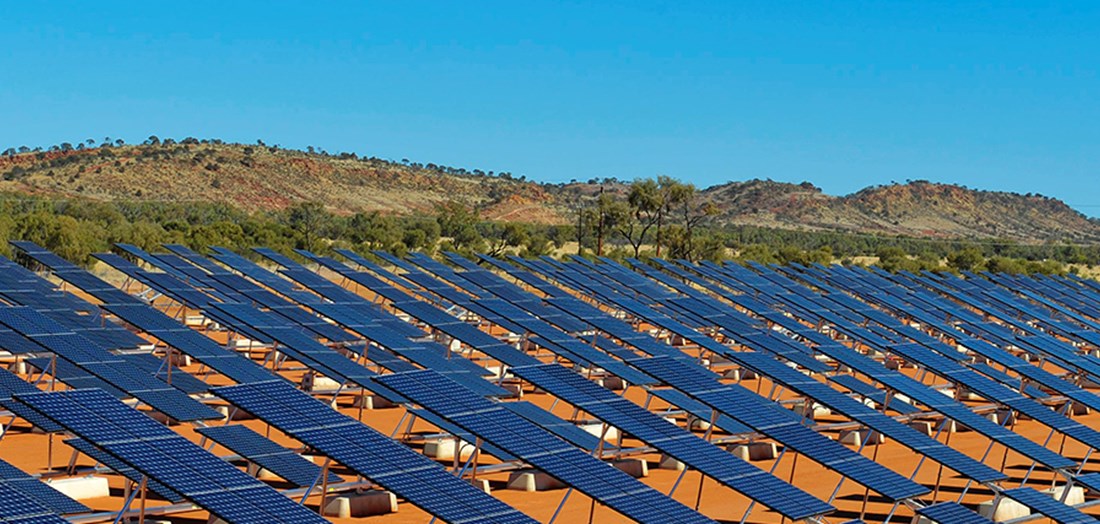The call has gone out for battery energy storage system (BESS) suppliers to tender their technology for a 35 MW, $30 million system to support the Northern Territory’s Darwin-to-Katherine grid as more Territorians install solar on their roofs.
The Gunner Labor Government announced its intention to procure and integrate the battery in April this year, along with a number of other renewable-energy initiatives, to stimulate investment and jobs in the sector during a time when many other industries were struggling under social distancing and lockdowns due to Covid-19.
In a statement released last week, Territory Chief Minister Michael Gunner and Minister for Renewables and Energy Eva Lawler said that households and businesses in the Territory “are taking advantage of affordable solar power with rooftop solar PV installations growing by an average of 45% each year since 2010”.
The Territory currently relies on large amounts of thermal spinning reserve in the form of gas-fired generation, to counter solar intermittency, maintain system frequency and avoid load shedding.
Government-owned Territory Generation, the major producer of electricity in the Northern Territory, and which will operate the BESS, has four power stations — Channel Island, Weddell, Katherine and Pine Creek (operated by Energy Development Limited) — supplying the Darwin-Katherine Grid with energy from gas-fired turbines backed by diesel generation.
The BESS is expected to save around $6 million a year by supplying power system services currently provided by gas generators, paying for itself in around five years after it becomes operational in the second half of 2022.
Aside from savings and reliability benefits, the battery is expected to reduce emissions from gas-fired plant by around 50,000 tonnes per annum.
“We’ve backed renewables and so have Territorians,” said Gunner in announcing commencement of procurement for the storage system.
The Northern Territory announced its target of net-zero emissions by 2050, and an interim target to have 50% of its generation provided by renewables by 2030, in the middle of this year as part of its Climate Change Response initiative.
Lawler said last week that the BESS procurement represents “a huge step forward” in achieving the 2030 milestone.
A procurement in two parts
The two-part tender process for the new BESS begins with prequalification during which Territory Generation, will seek to understand industry capability and encourage innovation.
An industry briefing will be held next Monday (16 November), and the specific expectations of the project are that it will:
- Provide contingency and regulating frequency control ancillary services (FCAS),
- Enable reduction of spinning reserve from gas fired generators,
- Enable further penetration of solar PV on the network,
- Contribute to system inertia
- Displace the operation of a Frame 6B gas turbine in all respects other than provision of energy
- Enable system strength requirements
Territory Generation CEO, Gerhard Laubscher, said, the BESS should “provide near-instantaneous response to changes in solar load, such as cloud cover.”
Round 2 of the tender process, in December 2020 will see successful parties from the initial round invited to a more detailed stage of consultation, with the successful proponent being awarded in early 2021.
“We are taking a collaborative approach to project planning with a number of stakeholders across Government and industry,” said Laubscher.
Gunner added that he expects “the cutting-edge technology” of the Territory BESS to, “reinforce the Northern Territory as the solar capital and comeback capital of Australia”.
What else is in store?
Solar watchers are of course already focused on the Territory as the host of the 10 GW Sun Cable project proposed near Tennant Creek; the world’s largest PV development to date, it aims to supply some 25% of Singapore’s electricity needs via a 3,750-kilometre subsea HVDC cable, and provide Darwin with renewable energy.
The SunCable project itself includes a proposed mega battery of up to 100 MW, to be built in Darwin as part of its Australia-ASEAN power link.
Sun Cable CEO David Griffin told pv magazine in May that the company hopes to commence work on the battery in early 2021; like the Territory Generation project it is expected to be commissioned in 2022.
As in other regions of increasing solar uptake and large-scale PV development, the Territory is turning increasingly to battery energy storage to provide stability and system services: a 5 MW BESS was successfully integrated into Alice Springs’ grid in 2018; and the Australian Renewable Energy Agency (ARENA) is backing the Alice Springs Future Grid project, announced in August this year, which includes a grid-scale battery system and aggregation of residential batteries into a virtual power plant.
In June this year, the NT Government also announced it would prioritise market reforms to encourage private investors and “maximise” the amount of renewable energy it could integrate into a reliable system.
At the time it estimated that projected rooftop solar uptake and current and committed large-scale solar projects would bring renewable generation in its grids up to around 16% by the end of this year.
This content is protected by copyright and may not be reused. If you want to cooperate with us and would like to reuse some of our content, please contact: editors@pv-magazine.com.









2 comments
By submitting this form you agree to pv magazine using your data for the purposes of publishing your comment.
Your personal data will only be disclosed or otherwise transmitted to third parties for the purposes of spam filtering or if this is necessary for technical maintenance of the website. Any other transfer to third parties will not take place unless this is justified on the basis of applicable data protection regulations or if pv magazine is legally obliged to do so.
You may revoke this consent at any time with effect for the future, in which case your personal data will be deleted immediately. Otherwise, your data will be deleted if pv magazine has processed your request or the purpose of data storage is fulfilled.
Further information on data privacy can be found in our Data Protection Policy.